Latest news
 https://amr-accelerator.eu/wp-content/uploads/2024/04/Asset-1.png
218
229
Tolga
/wp-content/uploads/2024/08/IMI-AMR-Accelerator_Slogan_quer_RGB.png
Tolga2025-11-18 08:50:072025-11-18 10:57:24AMR Accelerator Calls for Data
https://amr-accelerator.eu/wp-content/uploads/2024/04/Asset-1.png
218
229
Tolga
/wp-content/uploads/2024/08/IMI-AMR-Accelerator_Slogan_quer_RGB.png
Tolga2025-11-18 08:50:072025-11-18 10:57:24AMR Accelerator Calls for Data https://amr-accelerator.eu/wp-content/uploads/2024/04/Asset-1.png
218
229
Sakina
/wp-content/uploads/2024/08/IMI-AMR-Accelerator_Slogan_quer_RGB.png
Sakina2025-11-18 08:00:542025-11-18 10:53:29World AMR Awareness Week 2025
https://amr-accelerator.eu/wp-content/uploads/2024/04/Asset-1.png
218
229
Sakina
/wp-content/uploads/2024/08/IMI-AMR-Accelerator_Slogan_quer_RGB.png
Sakina2025-11-18 08:00:542025-11-18 10:53:29World AMR Awareness Week 2025 https://amr-accelerator.eu/wp-content/uploads/2025/11/GNA-NOW-interview.png
250
800
Tolga
/wp-content/uploads/2024/08/IMI-AMR-Accelerator_Slogan_quer_RGB.png
Tolga2025-11-18 07:55:122025-11-17 16:14:06Pedro Henrique Quintela: Translating Discovery to Impact
https://amr-accelerator.eu/wp-content/uploads/2025/11/GNA-NOW-interview.png
250
800
Tolga
/wp-content/uploads/2024/08/IMI-AMR-Accelerator_Slogan_quer_RGB.png
Tolga2025-11-18 07:55:122025-11-17 16:14:06Pedro Henrique Quintela: Translating Discovery to Impact https://amr-accelerator.eu/wp-content/uploads/2025/11/GNA-NOW-interview.png
250
800
Tolga
/wp-content/uploads/2024/08/IMI-AMR-Accelerator_Slogan_quer_RGB.png
Tolga2025-11-18 07:52:362025-11-17 16:13:48Marie Attwood: Advancing In Vitro Modelling in AMR Research
https://amr-accelerator.eu/wp-content/uploads/2025/11/GNA-NOW-interview.png
250
800
Tolga
/wp-content/uploads/2024/08/IMI-AMR-Accelerator_Slogan_quer_RGB.png
Tolga2025-11-18 07:52:362025-11-17 16:13:48Marie Attwood: Advancing In Vitro Modelling in AMR Research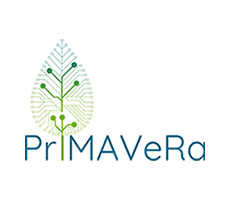 https://amr-accelerator.eu/wp-content/uploads/2022/02/primavera-1.png
217
230
Sakina
/wp-content/uploads/2024/08/IMI-AMR-Accelerator_Slogan_quer_RGB.png
Sakina2025-10-13 11:13:102025-11-05 11:14:4513/10/25 – PrIMAVeRa partners at 6th ESCMID Conference on Vaccines
https://amr-accelerator.eu/wp-content/uploads/2022/02/primavera-1.png
217
230
Sakina
/wp-content/uploads/2024/08/IMI-AMR-Accelerator_Slogan_quer_RGB.png
Sakina2025-10-13 11:13:102025-11-05 11:14:4513/10/25 – PrIMAVeRa partners at 6th ESCMID Conference on Vaccines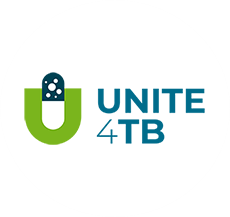 https://amr-accelerator.eu/wp-content/uploads/2021/10/unite4tb-4.png
217
230
Sakina
/wp-content/uploads/2024/08/IMI-AMR-Accelerator_Slogan_quer_RGB.png
Sakina2025-10-09 11:09:322025-11-05 11:10:3309/10/25 – UNITE4TB Expert Interview Series Complete
https://amr-accelerator.eu/wp-content/uploads/2021/10/unite4tb-4.png
217
230
Sakina
/wp-content/uploads/2024/08/IMI-AMR-Accelerator_Slogan_quer_RGB.png
Sakina2025-10-09 11:09:322025-11-05 11:10:3309/10/25 – UNITE4TB Expert Interview Series CompleteInterviews
 https://amr-accelerator.eu/wp-content/uploads/2025/11/GNA-NOW-interview.png
250
800
Tolga
/wp-content/uploads/2024/08/IMI-AMR-Accelerator_Slogan_quer_RGB.png
Tolga2025-11-18 07:55:122025-11-17 16:14:06Pedro Henrique Quintela: Translating Discovery to Impact
https://amr-accelerator.eu/wp-content/uploads/2025/11/GNA-NOW-interview.png
250
800
Tolga
/wp-content/uploads/2024/08/IMI-AMR-Accelerator_Slogan_quer_RGB.png
Tolga2025-11-18 07:55:122025-11-17 16:14:06Pedro Henrique Quintela: Translating Discovery to Impact https://amr-accelerator.eu/wp-content/uploads/2025/11/GNA-NOW-interview.png
250
800
Tolga
/wp-content/uploads/2024/08/IMI-AMR-Accelerator_Slogan_quer_RGB.png
Tolga2025-11-18 07:52:362025-11-17 16:13:48Marie Attwood: Advancing In Vitro Modelling in AMR Research
https://amr-accelerator.eu/wp-content/uploads/2025/11/GNA-NOW-interview.png
250
800
Tolga
/wp-content/uploads/2024/08/IMI-AMR-Accelerator_Slogan_quer_RGB.png
Tolga2025-11-18 07:52:362025-11-17 16:13:48Marie Attwood: Advancing In Vitro Modelling in AMR Research https://amr-accelerator.eu/wp-content/uploads/2025/04/COMBINE-interview.png
250
800
Tolga
/wp-content/uploads/2024/08/IMI-AMR-Accelerator_Slogan_quer_RGB.png
Tolga2025-04-28 14:46:392025-05-14 12:26:10Carina Sofia Matias: Setting the Standard for Infection Models
https://amr-accelerator.eu/wp-content/uploads/2025/04/COMBINE-interview.png
250
800
Tolga
/wp-content/uploads/2024/08/IMI-AMR-Accelerator_Slogan_quer_RGB.png
Tolga2025-04-28 14:46:392025-05-14 12:26:10Carina Sofia Matias: Setting the Standard for Infection ModelsNewsletters
From the partners
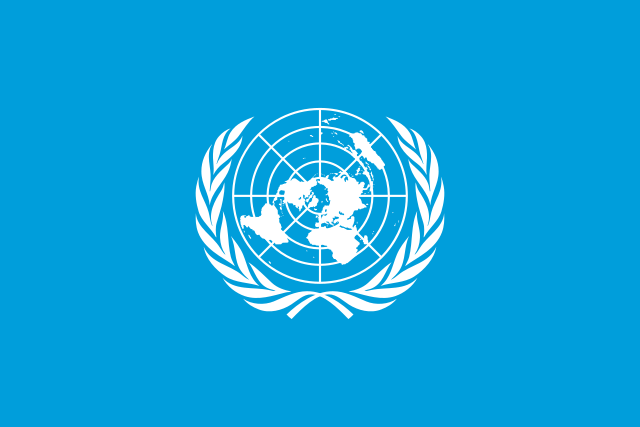 https://amr-accelerator.eu/wp-content/uploads/2024/04/Flag_of_the_United_Nations.svg.png
427
640
Tolga
/wp-content/uploads/2024/08/IMI-AMR-Accelerator_Slogan_quer_RGB.png
Tolga2024-09-27 11:09:012024-09-27 11:46:0726/09/24 – Press Conference on the High-Level Meeting on AMR and its outcome
https://amr-accelerator.eu/wp-content/uploads/2024/04/Flag_of_the_United_Nations.svg.png
427
640
Tolga
/wp-content/uploads/2024/08/IMI-AMR-Accelerator_Slogan_quer_RGB.png
Tolga2024-09-27 11:09:012024-09-27 11:46:0726/09/24 – Press Conference on the High-Level Meeting on AMR and its outcome
26/09/24 – UN General Assembly High-Level Meeting on antimicrobial resistance 2024
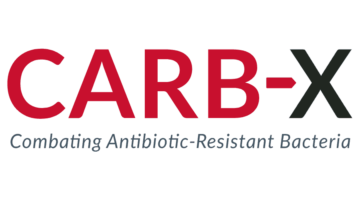 https://amr-accelerator.eu/wp-content/uploads/2024/04/carbx-logo-col-e1714147248241.png
200
360
Tolga
/wp-content/uploads/2024/08/IMI-AMR-Accelerator_Slogan_quer_RGB.png
Tolga2024-09-24 11:34:142024-09-27 11:45:0923/09/24 – CARB-X accepts applications for the second funding round
https://amr-accelerator.eu/wp-content/uploads/2024/04/carbx-logo-col-e1714147248241.png
200
360
Tolga
/wp-content/uploads/2024/08/IMI-AMR-Accelerator_Slogan_quer_RGB.png
Tolga2024-09-24 11:34:142024-09-27 11:45:0923/09/24 – CARB-X accepts applications for the second funding round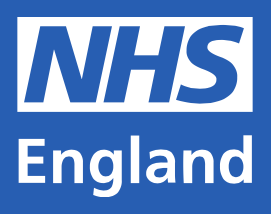 https://amr-accelerator.eu/wp-content/uploads/2024/09/nhs-england-logo.png
214
271
Tolga
/wp-content/uploads/2024/08/IMI-AMR-Accelerator_Slogan_quer_RGB.png
Tolga2024-08-19 11:22:222024-09-27 11:28:2912/08/24 – NHS Antimicrobial Products Subscription Model accepts applications
https://amr-accelerator.eu/wp-content/uploads/2024/09/nhs-england-logo.png
214
271
Tolga
/wp-content/uploads/2024/08/IMI-AMR-Accelerator_Slogan_quer_RGB.png
Tolga2024-08-19 11:22:222024-09-27 11:28:2912/08/24 – NHS Antimicrobial Products Subscription Model accepts applications
05/08/24 – WHO policy brief “Antibacterial pipeline trends and recommendations to enhance research and development”


AMR Accelerator Newsletter – November 2025
ERA4TB Newsletter – October 2025
UNITE4TB Newsletter – June 2025
AMR Accelerator Newsletter – May 2025
ERA4TB Newsletter – May 2025
AMR Accelerator Newsletter – December 2024